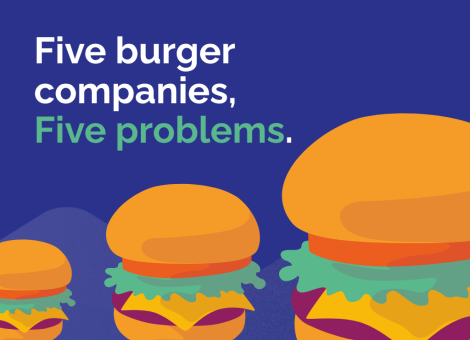Kalibrate's APAC predictions for 2023
2023 is around the corner, closing out a highly unpredictable year. Our team in APAC give their expert insights into what we can expect for the retail and fuel sectors in the region next year.
Economic slowdown will reverse recent trends
The Australian economy has been forecast to grow by around 1.5% in 2023 and 2024, far below the 5.9% growth seen in 2022. High consumer prices, pressure on both wages and price-setting as a result of an increase in cost of living, and rising inflation fuelled by increases in retail prices for electricity and gas will all impact household spending power in the year ahead. We expect the economy will slow in 2023 as the impact of increases in the cash rate (already announced by the RBA) continue to be felt across the region.
Supply chain disruption is likely to continue in the first half of 2023
China’s ‘Zero-Covid’ policy has been a source of disruption to global supply chains since 2020. We are yet to see the full extent of the effects of the this policy, but with infection rates on the rise, the only real certainty is uncertainty for retailers who rely on the global network of goods. Retailers will need to ensure flexibility in their distribution processes in order to meet consumer demand and reduce the impact of ongoing supply chain disruption.
Cost of capital pressures expected
Unemployment is at its lowest rate in nearly 50 years, and the economy-wide wage bill is growing at its fastest rate in 15 years. Strong demand for goods both essential and discretionary, and a surge in commodity prices, is pushing inflation up across the region, according to the Australian Bureau of Statistics. But with predictions of a slowing economy in early 2023, a fall in the average household savings, and the impact of increases in the cash rate (already announced by the RBA) continue to be felt across the region, businesses can expect further pressures on the cost of capital in 2023.
EV adoption will rise
Crossbench agreements by the Australian government, exempting EVs from a range of taxes and tariffs, and rules that new apartment developments will require the capability to charge electric vehicles, is expected to drive consumer adoption in 2023. Broad buy-in from the government, and support from businesses, should improve affordability and encourage the growth of the second-hand market. It is clear that the region is turning away from traditional internal combustion engine vehicles, organizations will need to develop plans for serving this new technology. We expect demand for EV charging to rise and our research shows that retailers can profit from adoption.
Post COVID changes in consumer behaviour
Covid is no longer the number one concern for consumers. In 2022, there has been a shift towards economic pressures impacting peoples’ purchasing power and household budgets – the primary factor in reduced spending in 2023 will be ensuring people can make ends meet. As noted previously, inflation and increased cost of living is expected to continue into the new year, forcing many to look at ways to reduce their outgoings. Retailers will need to react to these concerns and potentially look at adapting their formats and offerings in the year ahead to meet the needs of their consumers – particularly in the grocery and essential goods sectors. In 2023, we expect that decision making will be driven primarily by micro-market data trends and customer demographic insights – and for retailers to engage with their customers strategically using data to deliver excellent brand experiences.
New store formats will shift perspectives in the retail market
We are seeing more retailers experiment with their store concepts – ranging from Aldi focussing on the convenience space, to Coles aiming to deliver more local, high-quality produce to their customers. With the changes to consumer buying behaviours in recent times, this experimentation isn’t surprising. Optimizing location and offering will be one of the top priorities for all retailers to capture their ideal market and reflect the needs of their local audiences. These format updates will likely be accompanied by more innovations in the retail space to offer maximum value for customers, offer unique experiences and boost brand loyalty.
New tech will change shopping habits
Speaking of innovations in the retail space, we expect to see more retailers experiment with how best to serve their customers, both instore and at home. Coles have recently made headlines by launching Australia’s first store-to-door drone delivery service – giving shoppers the option to receive their groceries in minutes of ordering online. Offering customers convenience, and a wider range of options for their shopping experiences will be a primary battleground for retailers looking to retain customer loyalty – but we don’t expect the brick-and-mortar store to disappear any time soon.
Omnichannel will be key to meeting consumer demand
Digital channel growth is still outpacing brick-and-mortar in the retail space, but there are signs that digital fatigue is setting in – and in-store still makes up the majority of sales. There is little evidence to suggest this will change in the near future, but brands that have invested in an omnichannel experience are uniquely positioned to offer maximum customer choice, whilst maintaining a consistent brand experience – regardless of channel preference. The rise of offerings like click-and-collect have fundamentally altered consumer expectations – offering omnichannel is predicted to become the standard by which all brands will be judged.
Read more articles about:
Electric VehiclesSubscribe and get the latest updates
You may unsubscribe from our mailing list at any time. To understand how and why we process your data, please see our Privacy & Cookies Policy
Related Resources
Location intelligence
Five burger companies, five problems
These burger brands had challenges from international growth to understanding franchise locations cannibalization,...

Location intelligence
Market Optimizer: Demo video
Market Optimizer allows users to strategically grow their network in existing markets while balancing revenue...


